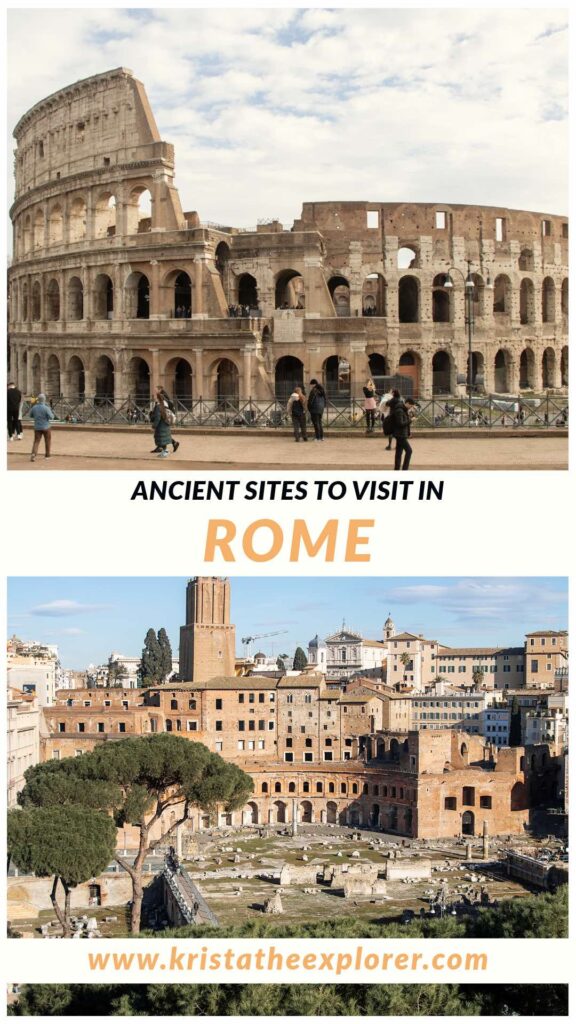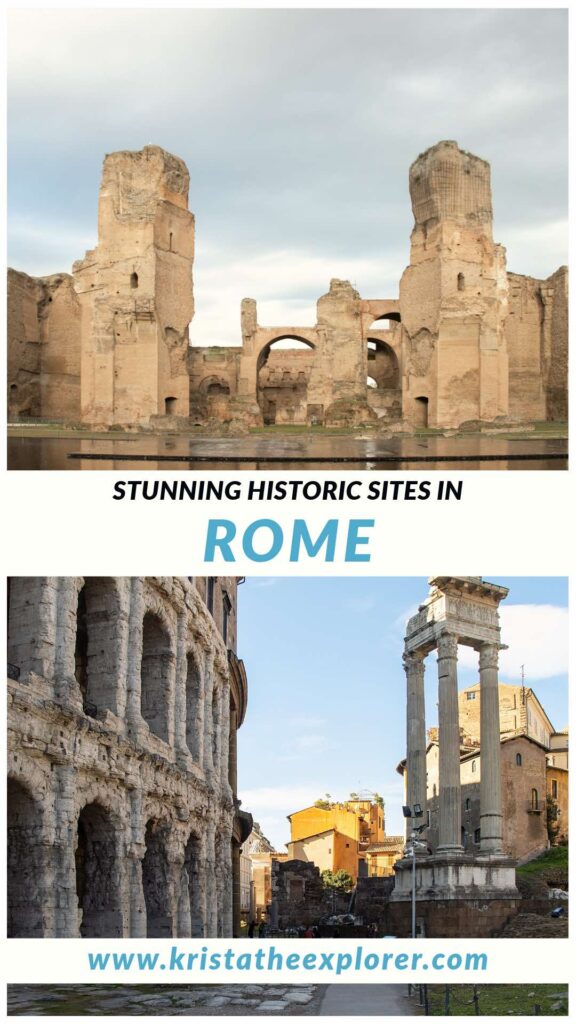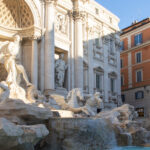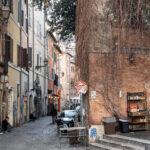Rome is one of the most beautiful cities in the world, especially for people interested in history. Often referred to as the Eternal City, Rome offers a captivating blend of vibrant modern life and ancient history. As you make your way through the historic streets of Rome, you’ll instantly be transported back in time as you catch glimpses of the city’s glorious past. There are a lot of ancient sites in Rome to explore, from the Colosseum and the Roman Forum to hidden gems in Rome that are sometimes missed by visitors.
Whether it’s your first time visiting Rome or you’re a history enthusiast that’s been countless times before, you certainly won’t find yourself short of things to do in Rome. You’ll no doubt want to see the main attractions in Rome, but don’t forget to add a few less visited ancient sites in Rome to your itinerary too. If you’re short on time, I’d recommend booking a guided walking tour or even a food tour in Rome so you can at least get a bit of background about what you’re seeing.
Remember, Rome is a city to be savoured, so even if you’re only spending 3 days in Rome, you should still take time to enjoy the city at a leisurely pace. And don’t forget to toss a coin in the Trevi Fountain to ensure you return swiftly to Rome!
- Ancient sites in Rome to visit
- Historic restaurants in Rome
- Where to stay in Rome
- How many days to stay in Rome
Ancient sites in Rome to visit
Forum of Augustus
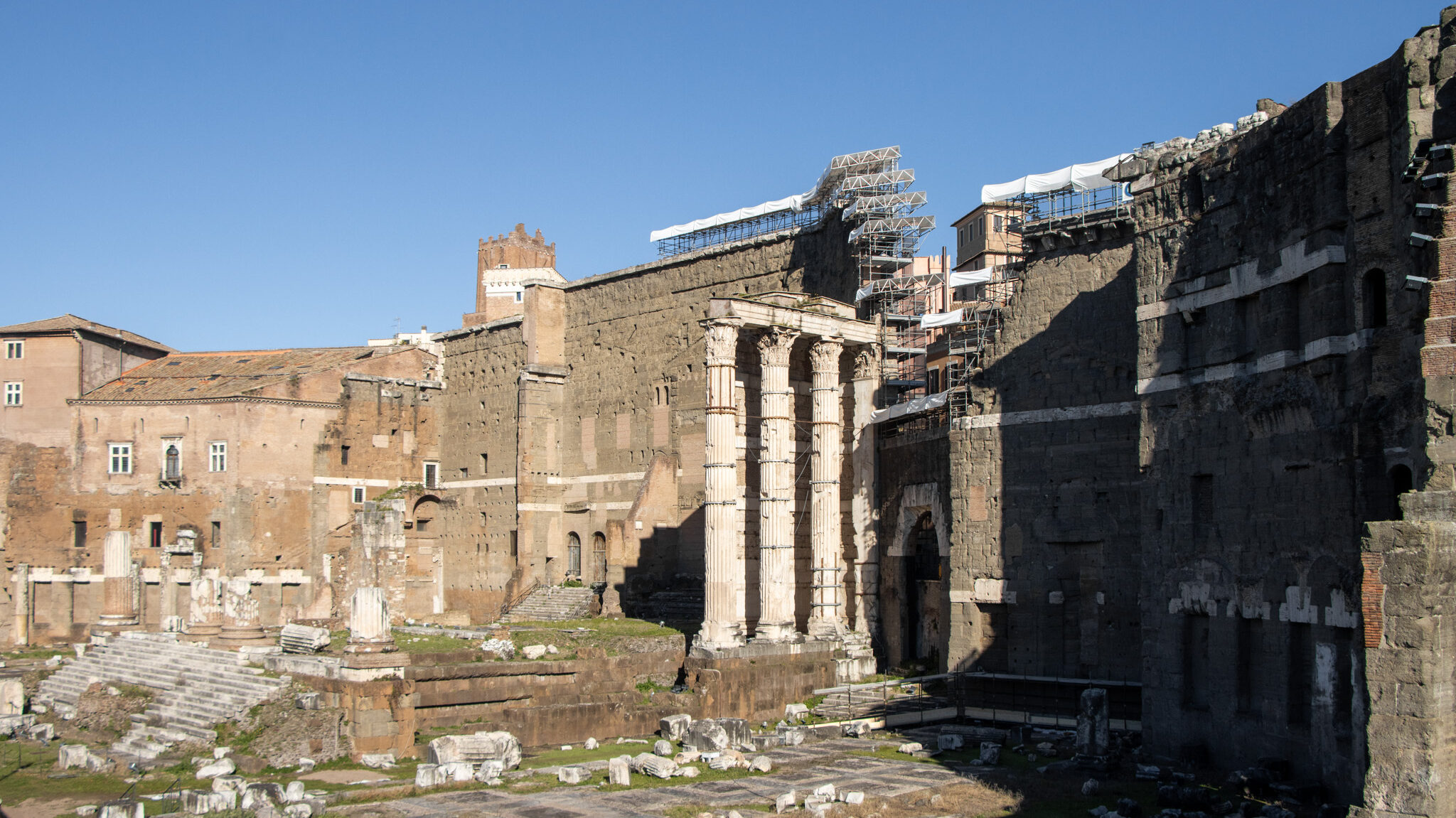
Built over 2000 years ago, the Forum of Augustus was designed to showcase the achievements of Rome’s first emperor as well as the might of the Roman Empire. The main feature here is what remains of the Temple of Mars Ultor which was dedicated to the god of war. As you walk by the Forum of August, you’ll notice that not much of it remains today, but it still gives visitors a unique look into the political and religious life of the Romans during this period.
Forum of Trajan
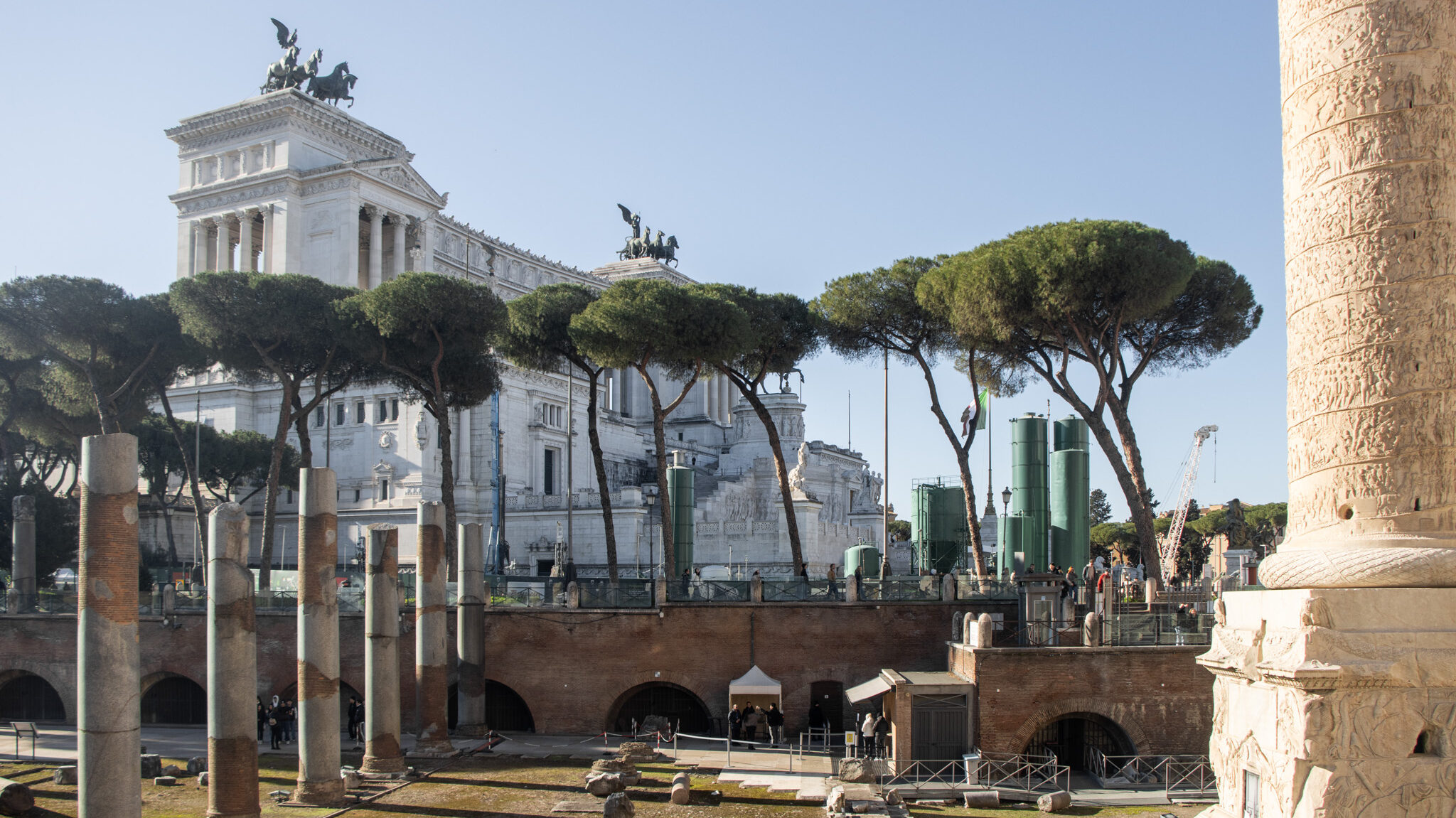
A short walk from the Forum of August lies the Forum of Trajan. It was completed in 112 AD and it’s the largest imperial forum in Rome. It was built to celebrate Emperor Trajan’s victory in the Dacian War, with grand plazas, bustling markets, and beautiful columns. The impressive Trajan’s Column still stands as a towering monument today and it tells the story of the emperor’s military campaigns through spiraling reliefs.
Trajan’s Market
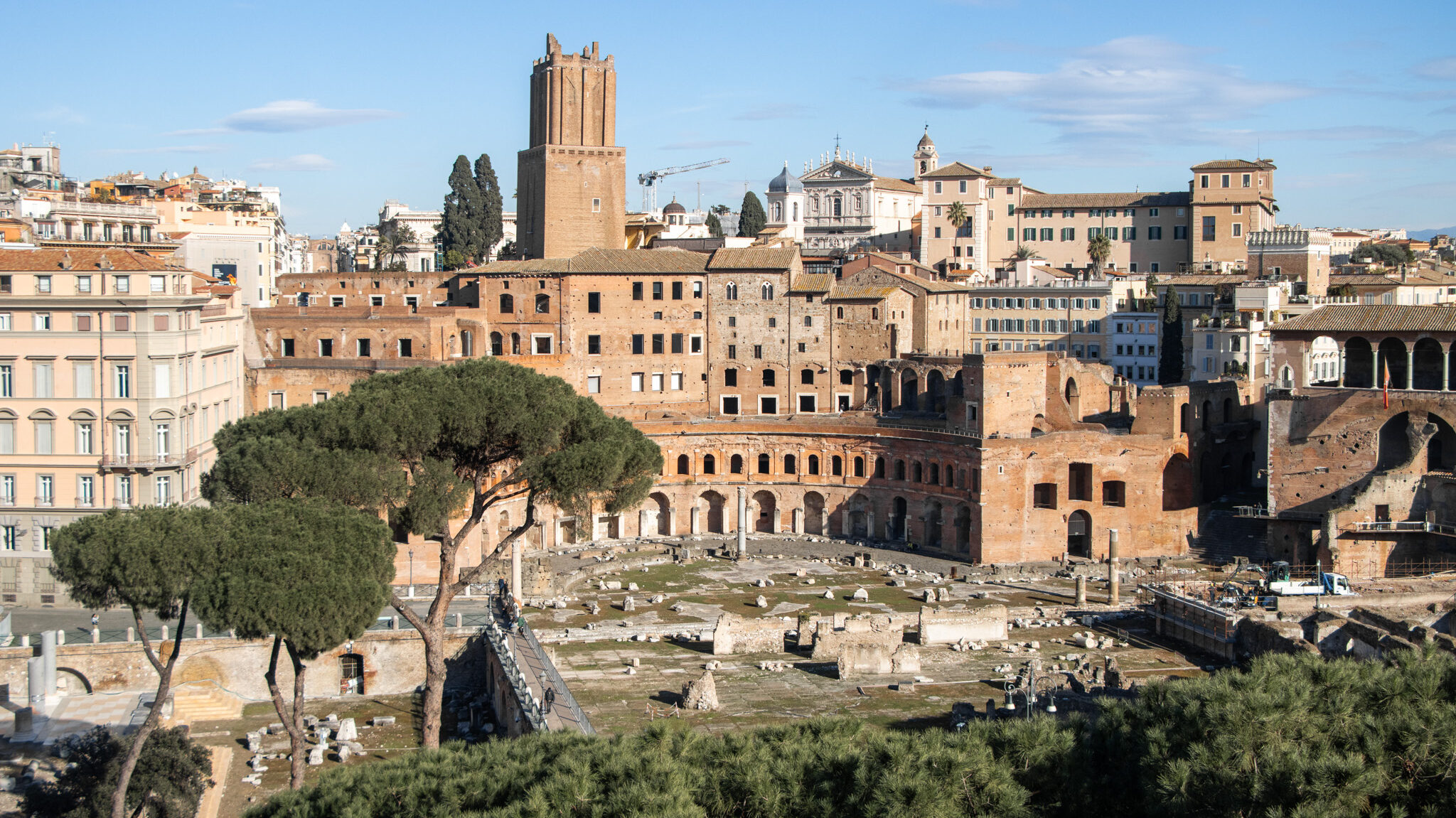
Trajan’s Market was built around the same time as the Forum of Trajan, and it’s considered to be the world’s first shopping centre. It was designed as a multi-level complex with over 150 shops and offices where Romans could buy all sorts of goods, from textiles to fresh produce. The semi-circular structure is still evident today and visitors have the rare opportunity to walk through one of the most well preserved ancient sites in Rome.
Thanks to the Museum of the Imperial Fora, you can also learn more about the history of Trajan’s Market. However, there’s a platform you can walk along which sits above the archeological complex that’s free to access if you don’t have time to go inside the museum.
Largo di Torre Argentina
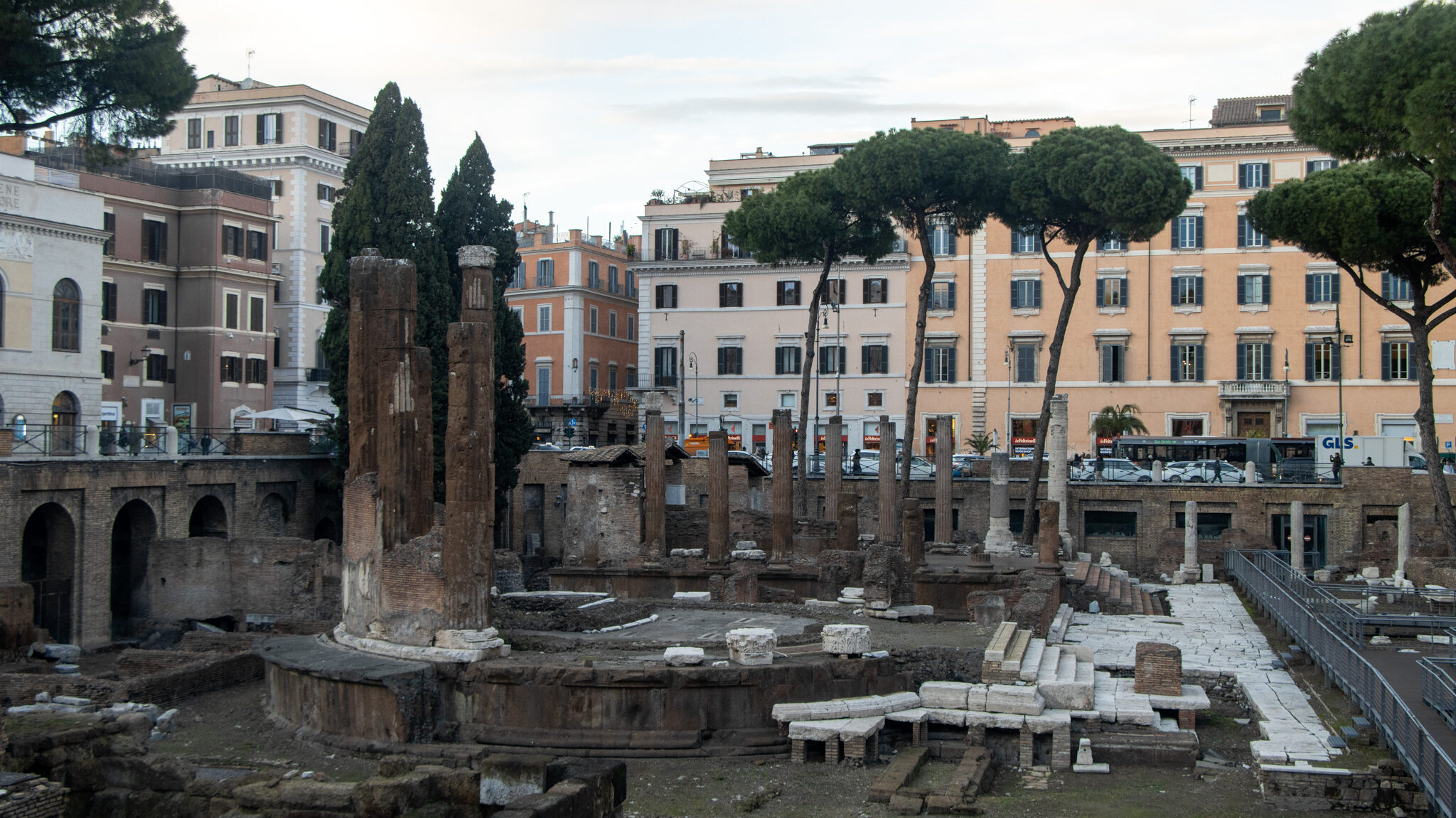
One of the most interesting ancient sites in Rome to visit is Largo di Torre Argentina. It sits in the very heart of Rome and is home to no less than four temples that date back as far as the 4th century BC. This archaeological site sits in a sunken square and is famous for being the location of the assassination of Julius Caesar in 44 BC.
Besides its historical significance, Largo de Torre Argentina has also become a sanctuary for the stray cats of Rome who are looked after by a local shelter. If you’re visiting the ruins, be on the lookout for some of these feline friends.
Vicus Caprarius
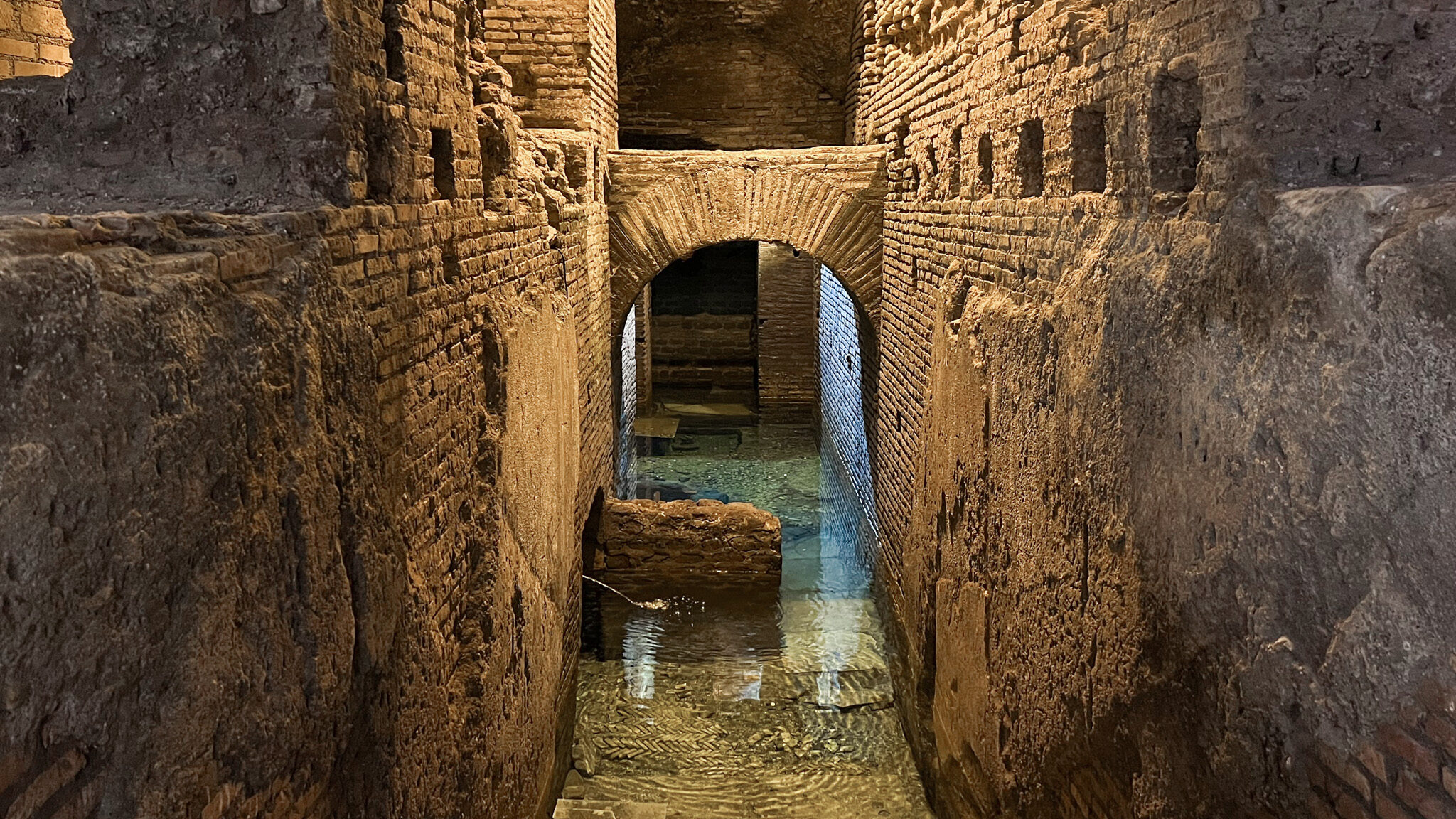
Known as the City of Water, Vicus Caprarius is one of the most unique underground ancient sites in Rome. It sits under the streets near the Trevi Fountain and dates back to the 1st century AD. This archaeological complex includes what remains of a courtyard, Roman houses, and a very intricate network of aqueducts. The clear pools of water are still visible today and come from the same source as the Trevi Fountain.
Vicus Caprarius is still a hidden gem in Rome, despite its central location. It’s a unique attraction that offers a look into the various layers of Rome, with the modern city sitting right on top. Inside you’ll also find an interesting exhibition showcasing artifacts and mosaics, a world away from the bustling street noise above.
Stadium of Domitian
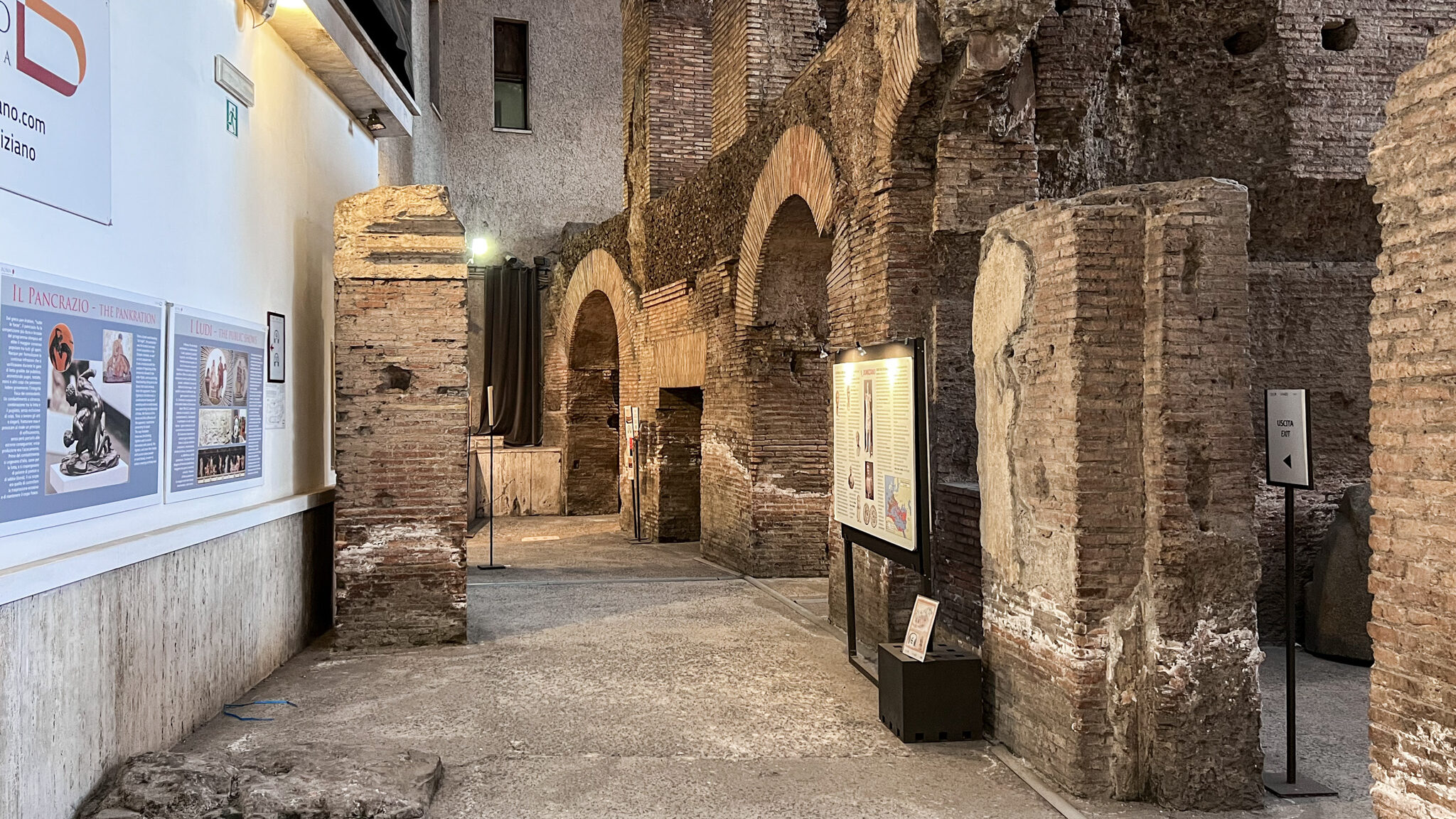
There are almost endless ancient sites in Rome to visit, but one that definitely needs to be on your list is the Stadium of Domitian. It lies under Piazza Navona and was once used as an ancient sports arena. The stadium dates back to the 1st century AD and it was the first permanent structure in Rome dedicated to athletic competitions. This stadium has been incredibly well preserved underground, so it’s a unique experience to walk among its remains.
The layout of the Stadium of Domitian is still evident today, with Piazza Navona taking on the same oval shape. If you’re spending 3 days in Rome or more, you need to make sure you don’t miss this incredible ancient Roman site.
Colosseum
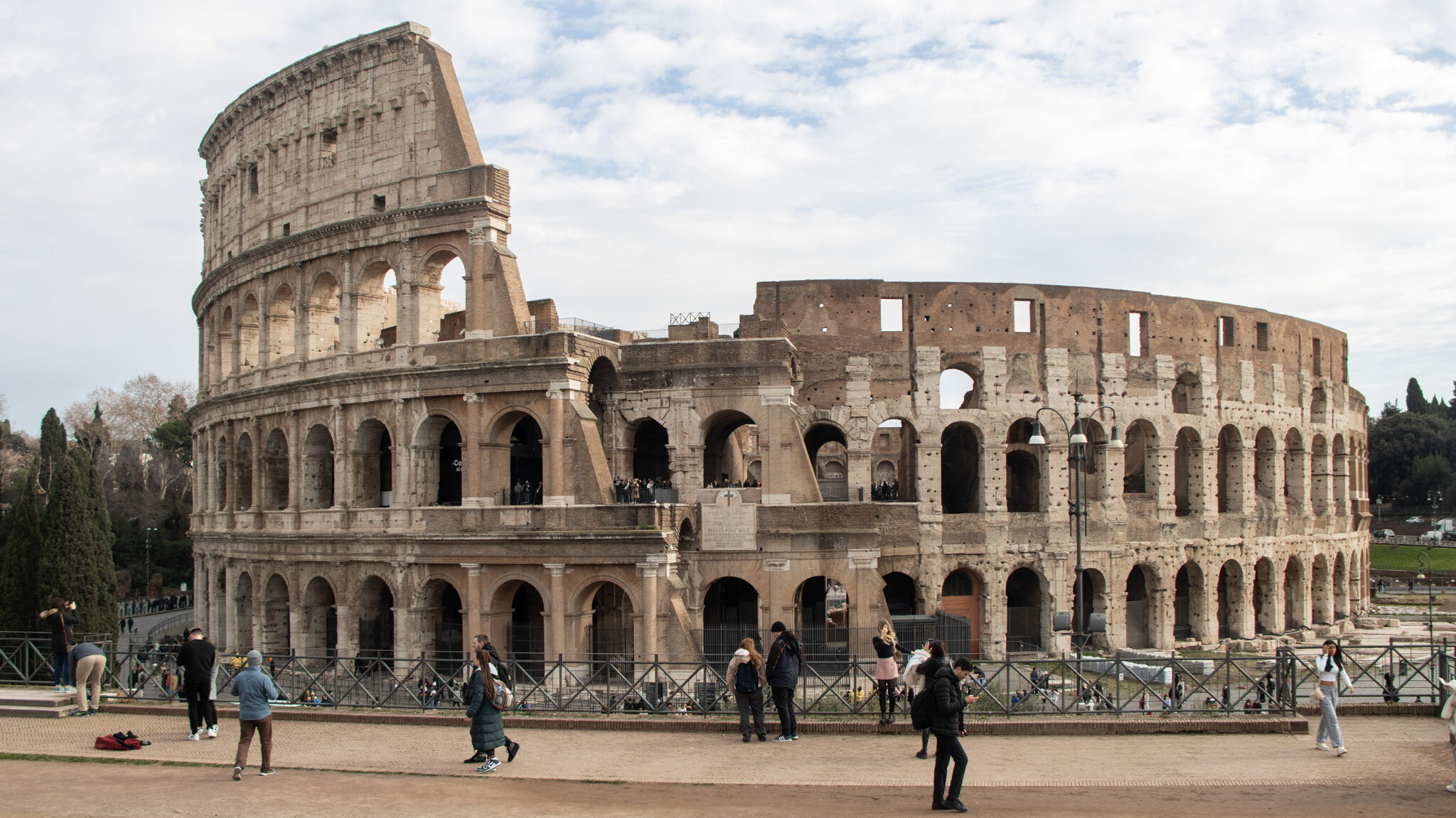
Whenever anyone talks about ancient sites in Rome, the first spot that comes to mind is the world-famous Colosseum. Also known as the Flavian Amphitheatre, the Colosseum is the most iconic landmark in Rome. It was built between 70-80 AD and could hold up to 50,000 spectators who would gather to watch gladiator battles and other events.
There are several ticket options on the official Colosseum website that will grant you access to different levels of the monument. I would recommend booking a guided tour of the underground level because it gives you a rare glimpse into the area where the gladiators and animals would have prepared for battle.
Tickets for the Colosseum are released 30 days ahead of time, so you need to be very quick to book them as they sell out almost immediately. Make sure you understand what ticket you’re purchasing too, as some will include access to the Roman Forum over 48 hours. This means you don’t need to rush around both sites in one day.
Roman Forum
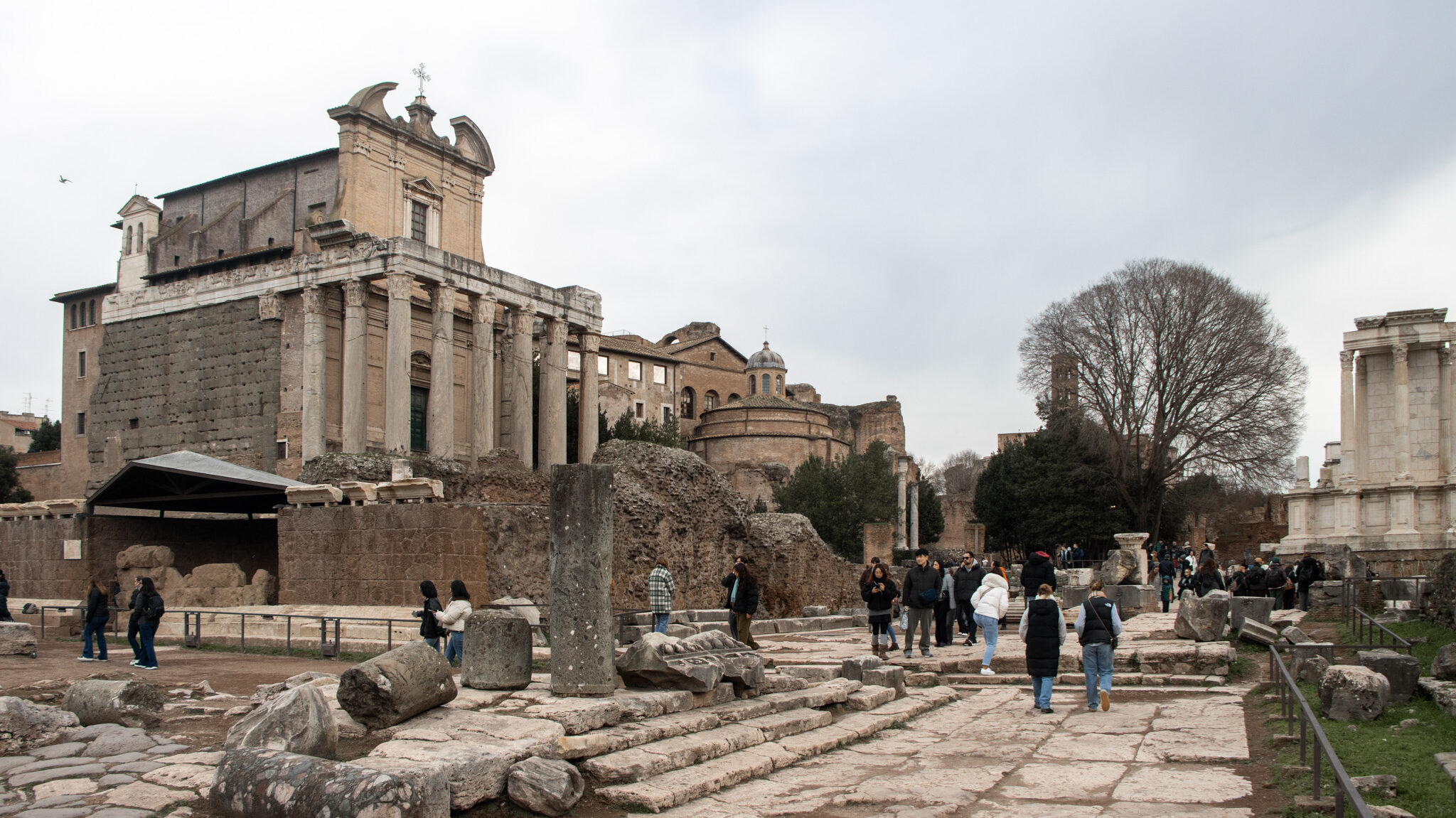
You can’t visit Rome without planning a trip to the Roman Forum. This was once the very heart of ancient Rome and it served as the commercial, political, and social centre of the city. Many key landmarks can be found here such as the Arch of Titus, the Senate House, and the Temple of Saturn. As you walk through what remains of the Roman Forum, you’ll feel like you’ve been transported back in time as you’re surrounded by the crumbling remains of the empire.
It’s recommended to take a guided tour of the Roman Forum, but you can also visit it at your own leisure and soak up the incredible atmosphere here.
Palatine Hill
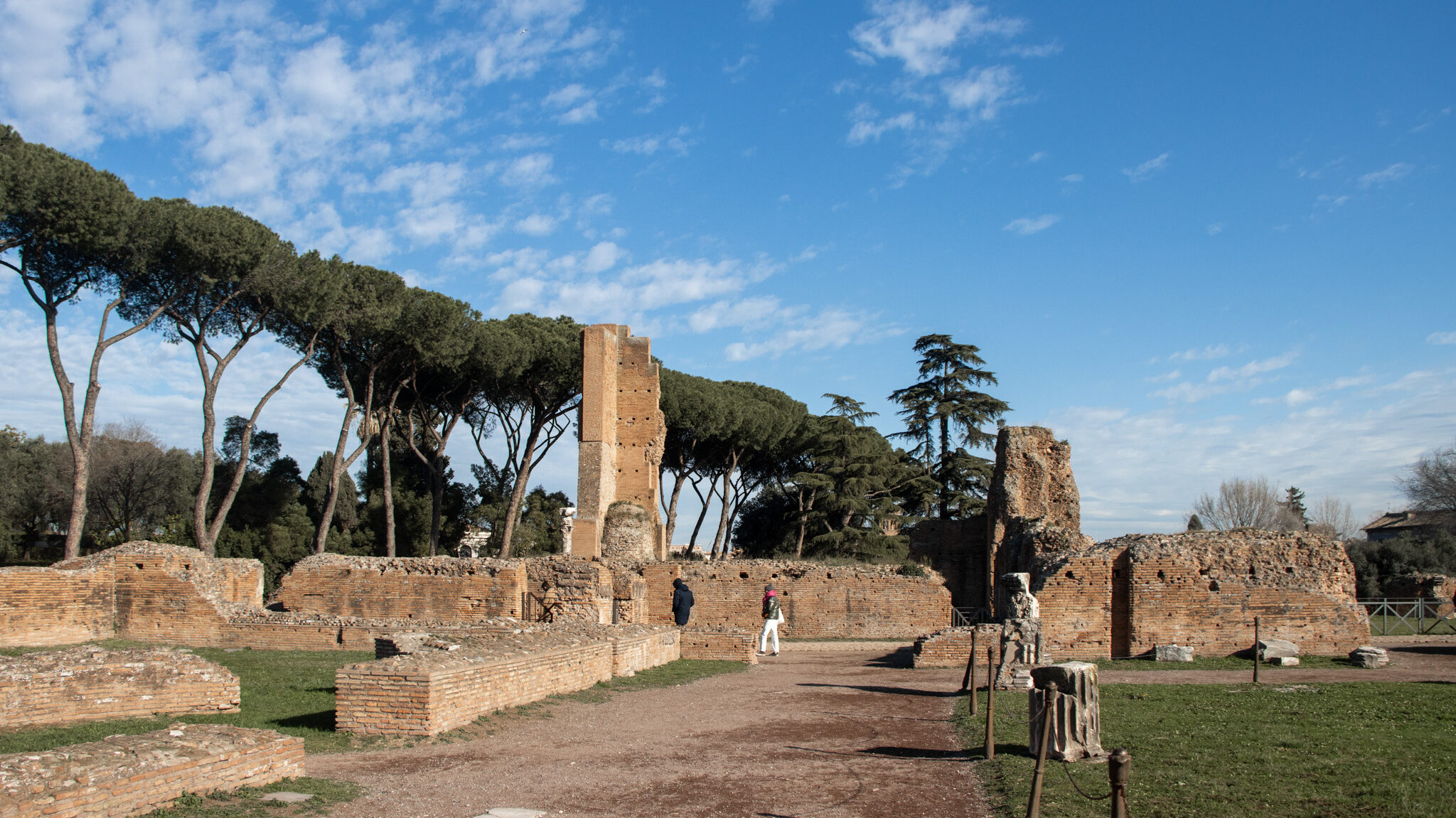
Included in your ticket for the Roman Forum is the Palatine Hill. This is one of the Seven Hills of Rome and it’s known in Roman mythology as the birthplace of the city. Today the hill offers breathtaking panoramic views of Rome and it’s home to several imperial palaces as well as The Palatine Museum.
The Palatine Hill is where the elite of ancient Rome would have based themselves. As you walk through the ruins here you can better understand how emperors such as Augustus and Tiberius would have lived. Some of the attractions on the Palatine Hill are only available if you have a ticket that includes SUPER sites, such as the House of Livia.
Circus Maximus
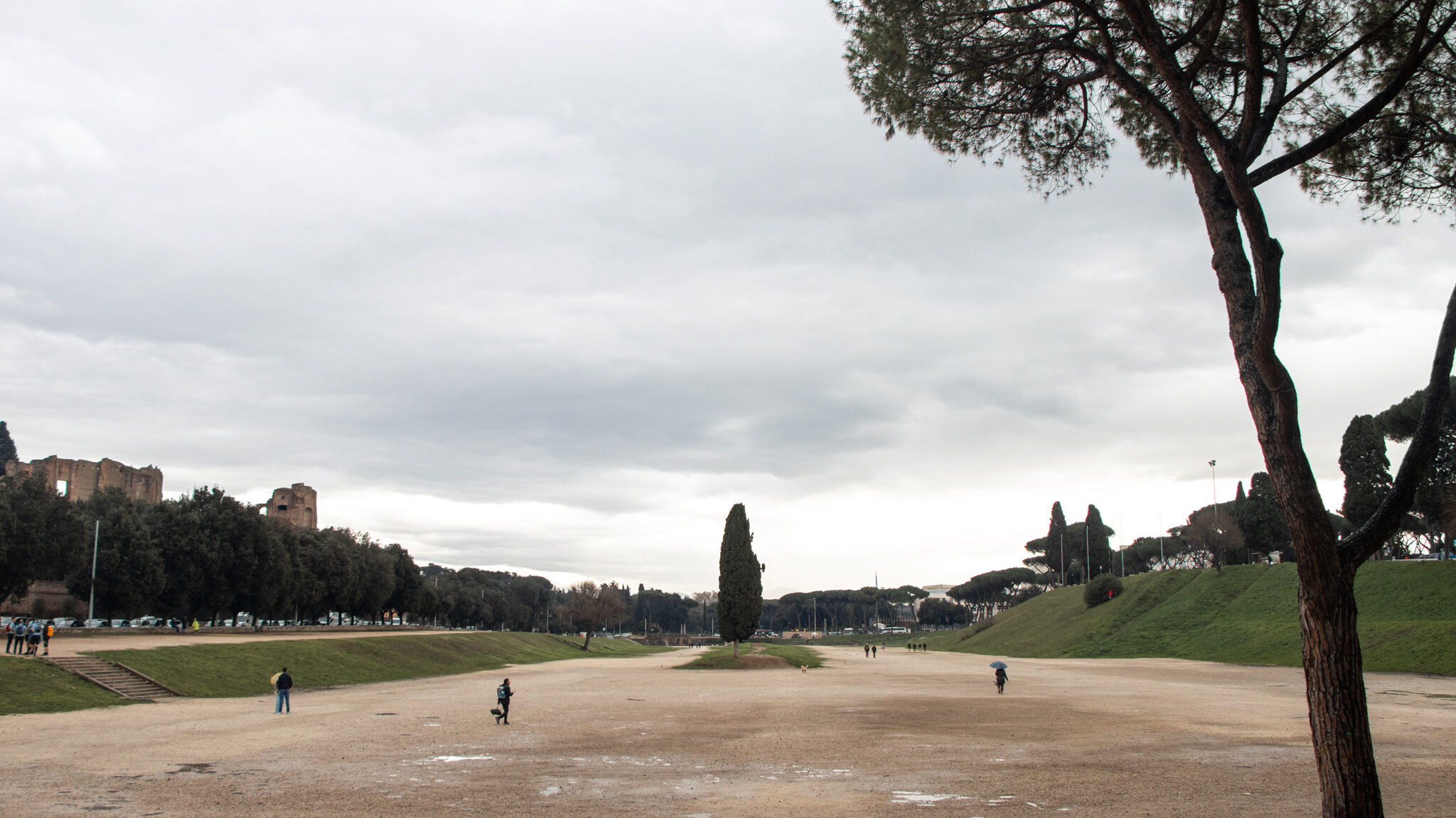
Although the Circus Maximus doesn’t look like much today, in ancient Roman times it stood as the largest chariot racing stadium in the city. It could hold up to 250,000 spectators, making it also one of the most impressive ancient sites in Rome, and beyond.
It sits between the Aventine Hill and the Palatine Hill, but sadly very little of the stadium remains today. You can still see the layout of the arena though, with its distinct oval shape that stretches out into the distance. The Circus Maximus is free to enter too, since it’s used as a green space in the city.
Castel Sant’Angelo
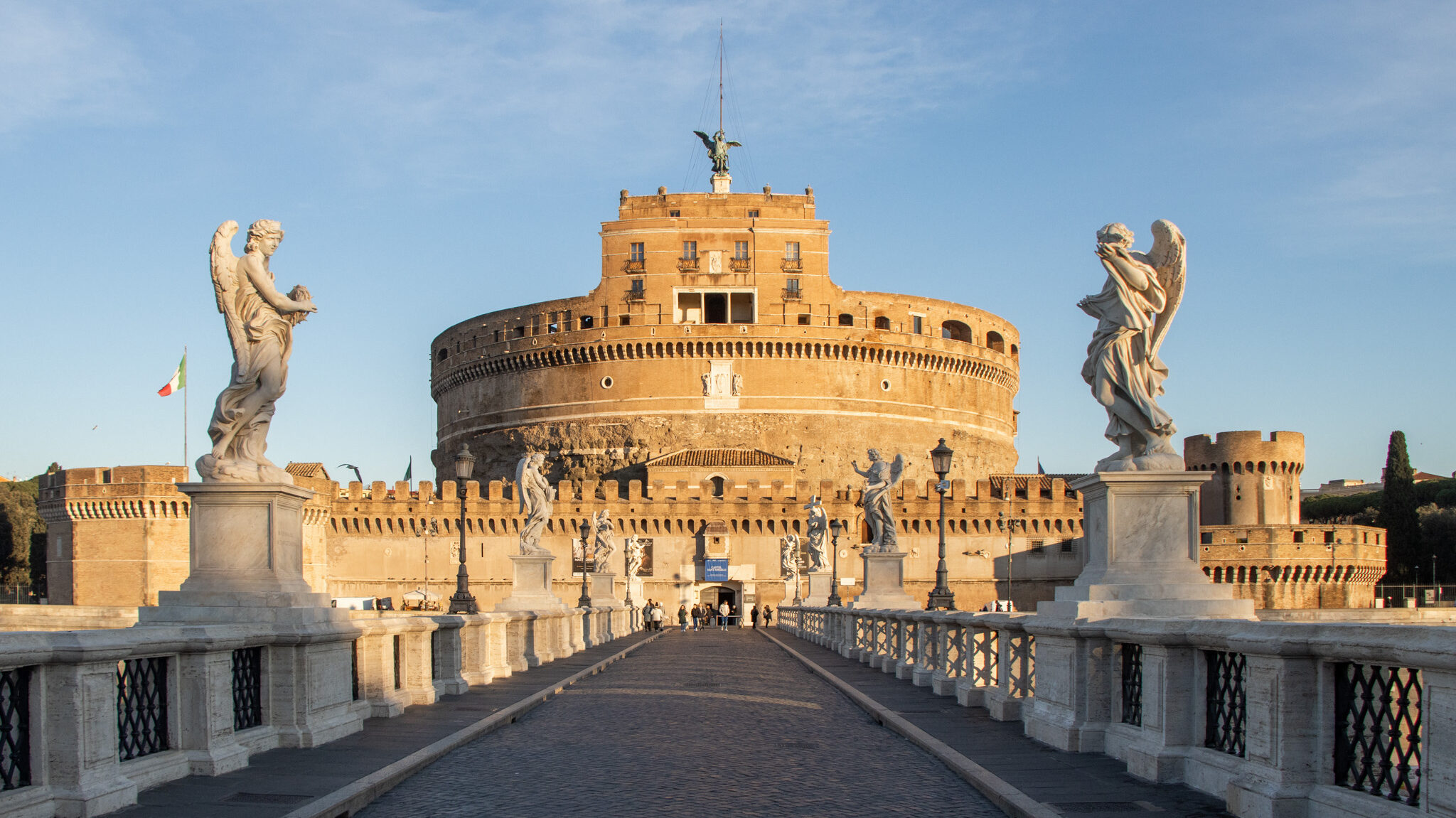
Castel Sant’Angelo stands as one of the most impressive ancient sites in Rome still standing. It was originally built in 135 AD as a mausoleum for Emperor Hadrian, but it served many other purposes throughout its history. Its towering presence along the Tiber River and its connection to the Vatican (through a secret passageway) makes it especially captivating. Although Castel Sant’Angelo has been heavily modified since it was first built, it still stands as a must-see ancient Roman landmark.
Forum Boarium
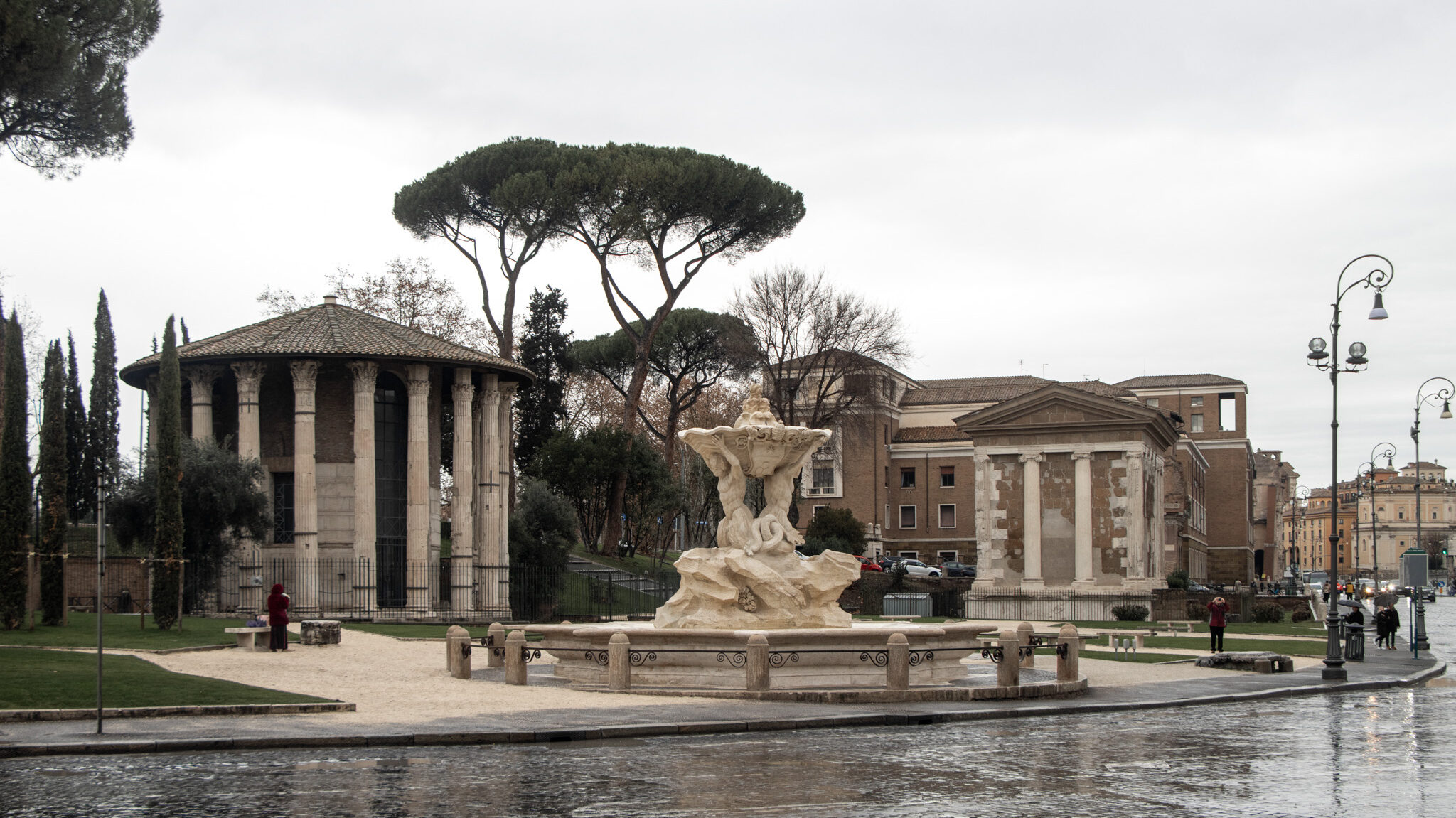
The Forum Boarium is one of the city’s oldest archaeological sites, so it’s surprising that it’s also among the least visited. It has a history dating back to the 6th century BC and it was once a busy cattle market, as well as a centre of trade and commerce for other goods. Despite its small size compared to other forums in Rome, the Forum Boarium offers a rare look into the very start of Rome.
There are still some impressive monuments here worth taking note of as well. The Temple of Hercules Victor and the Temple of Portunus both date back to around the 2nd century BC and are dedicated to the gods of harbours. Although this forum is located in a busy part of Rome, you’ll find it to be a quiet spot compared to other key ancient sites in Rome.
Tip: Sitting across the road from the Forum Boarium is the Mouth of Truth, one of Rome’s most visited tourist attractions. Try to arrive early in the day to avoid a long queue.
Pantheon
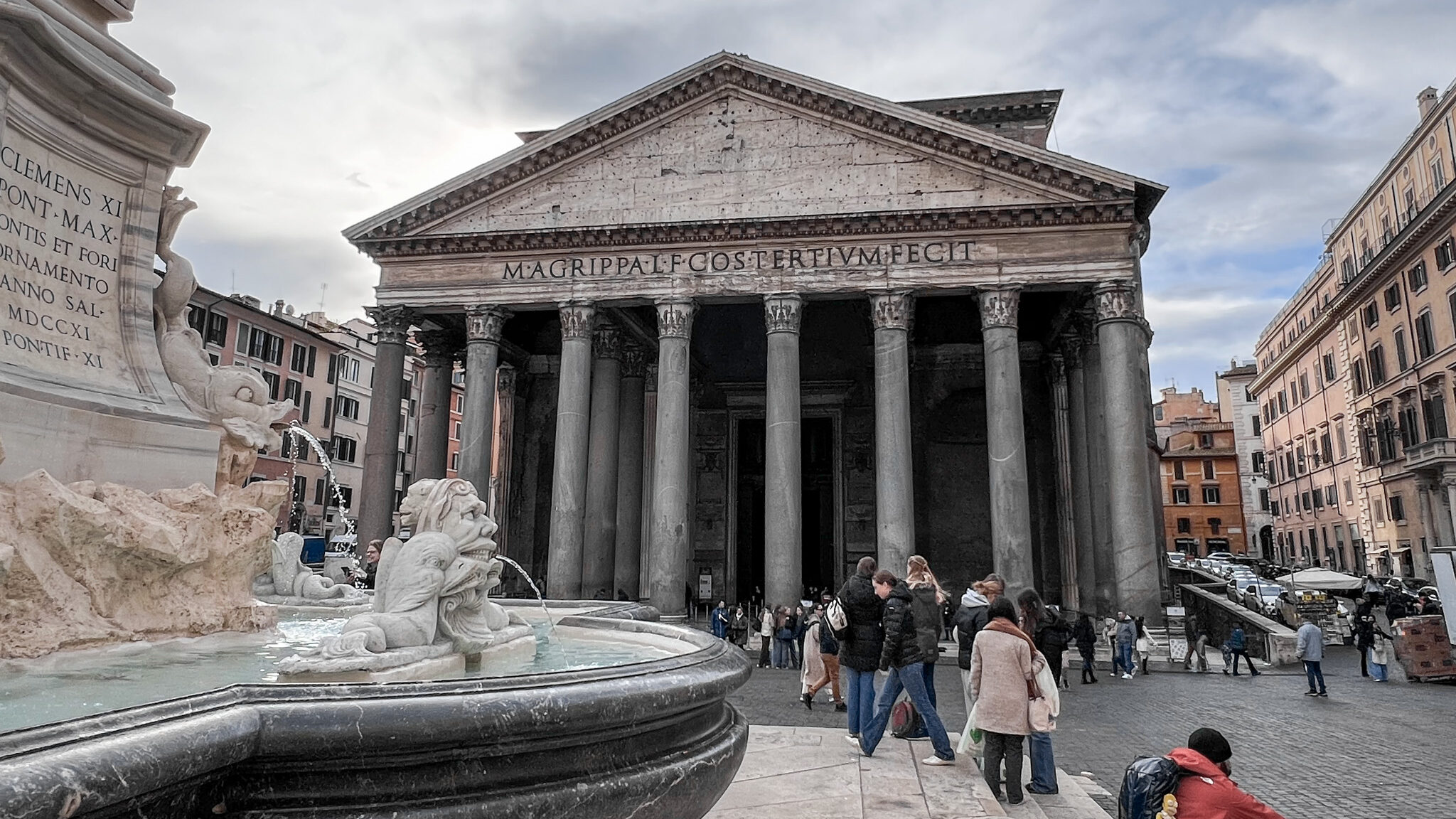
One of the top visited ancient sites in Rome is the Pantheon. It was originally built around 27 BC as a temple to the gods, and it was later rebuilt by Emperor Hadrian in 126 AD. It’s known for its iconic dome that still stands as the largest unreinforced concrete dome in the world. The hole in the centre of the dome allows light to enter the interior, and it’s said to help connect the temple to the gods.
The Pantheon is particularly impressive because it’s been left standing after almost 2000 years. This is partly down to it being transformed into a Christian church in the 7th century, which has helped to protect it. Tickets for the Pantheon are inexpensive and can be purchased using the ticket machines near the entrance or online.
Temple of Hadrian
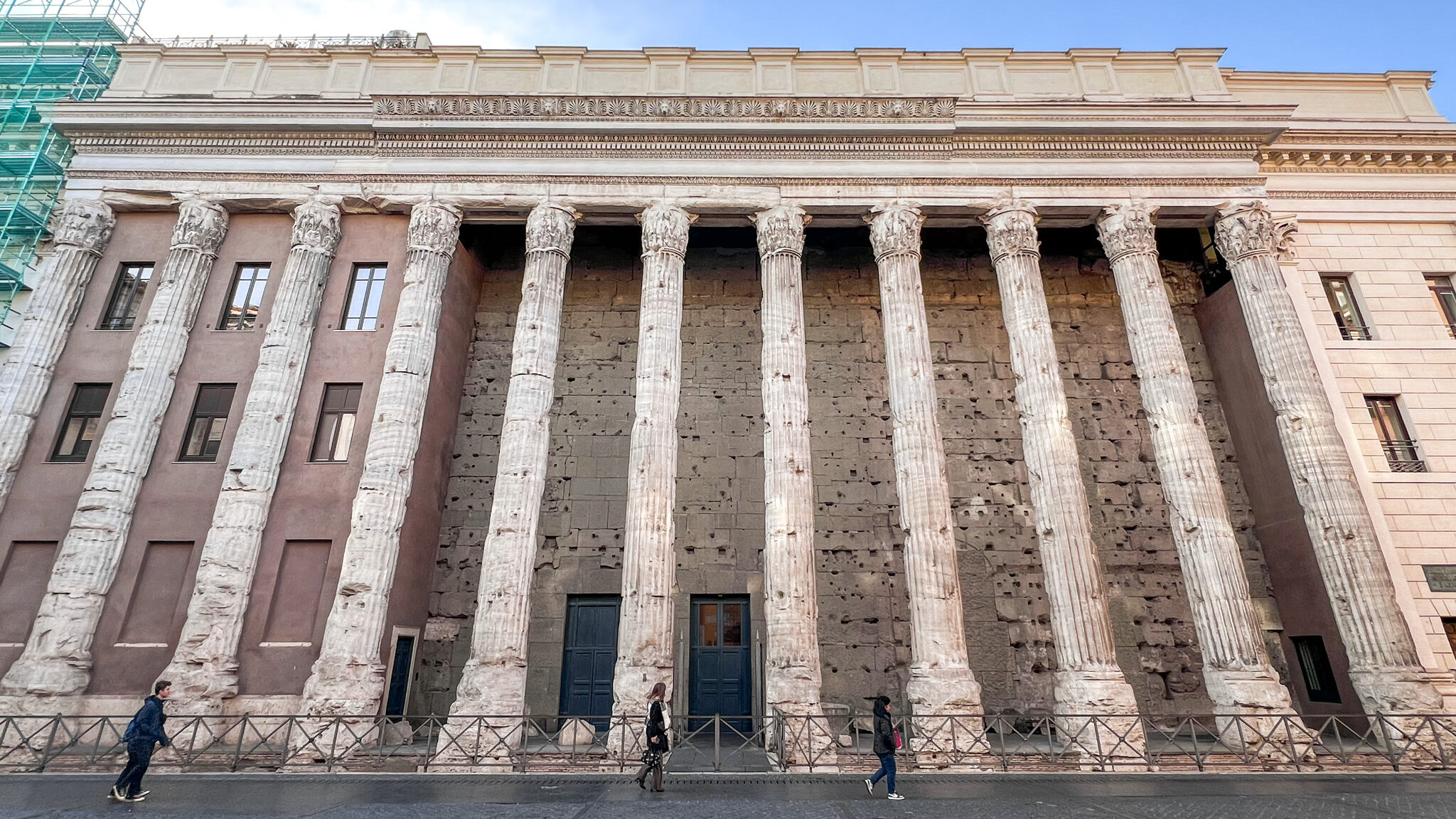
Another example of overlooked ancient sites in Rome is the Temple of Hadrian. It was built in honour of Emperor Hadrian following his death in 138 AD, and mostly stands as a ruin today. It once featured a series of Corinthian columns across the facade and was meant to symbolize the divine status of the emperor. The few columns that have been preserved today are very impressive to look at, and if you enter the building you can watch a short, free video about the history of ancient Rome too.
Theatre of Marcellus
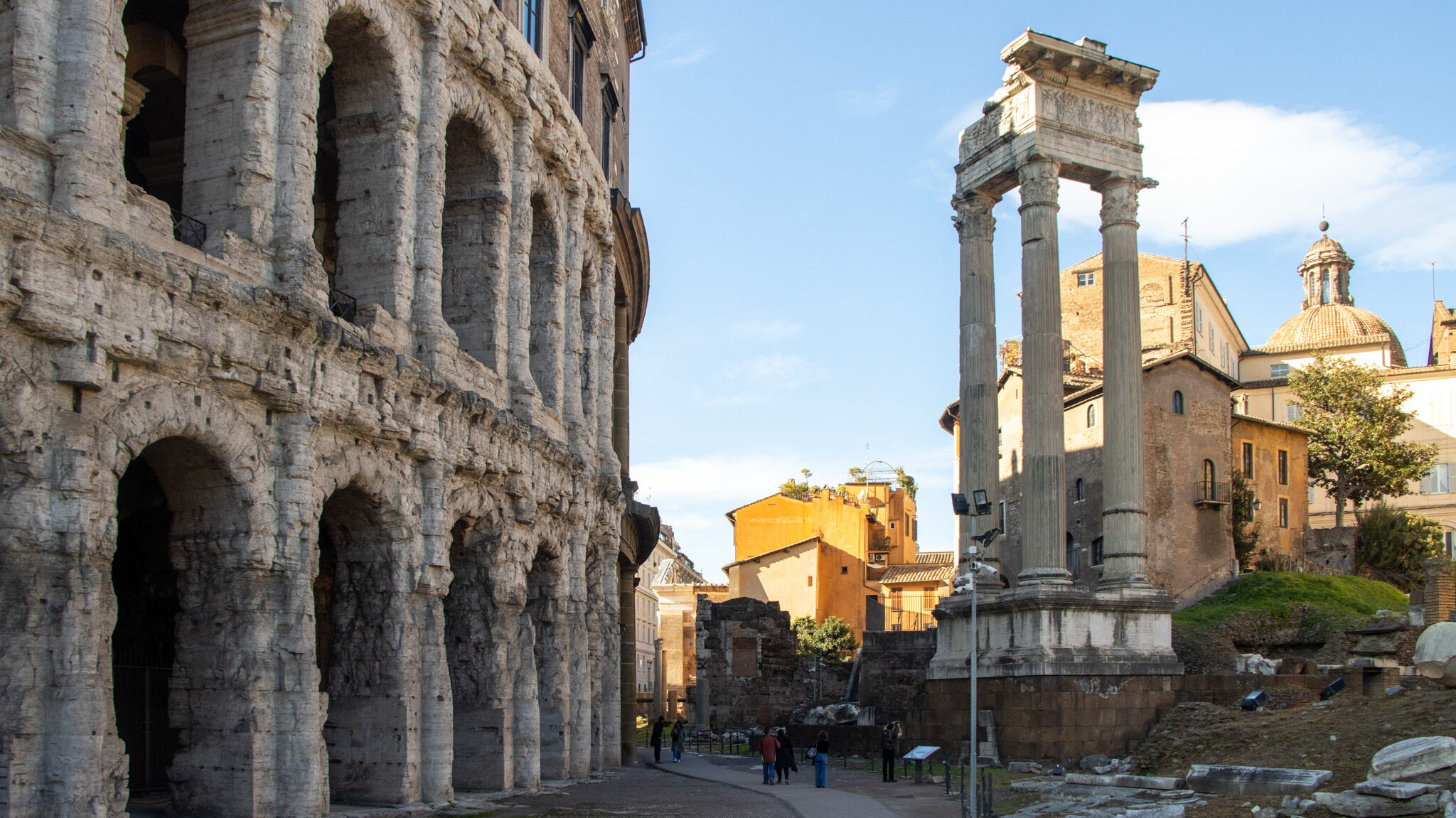
Located a short walk from Piazza Venezia is the Theatre of Marcellus. It was built in 13 BC by Emperor Augustus in honour of his nephew. It still stands as one of the most impressive ancient sites in Rome. The theatre could hold up to 20,000 people who would have gathered to watch theatrical performances. Its design later influenced other structures such as the Colosseum.
The Theatre of Marcellus has undergone a lot of changes since it was first built. The lower levels showcase the might of the Roman empire, whereas the top levels are from more recent periods as the theatre was at one point built over by houses.
The Theatre of Marcellus sits along the edges of the Jewish Ghetto in Rome. This area is equally worth walking around as it’s a very underrated part of Rome. It’s also next to the Portico of Octavia which once linked two Roman temples.
Baths of Caracalla
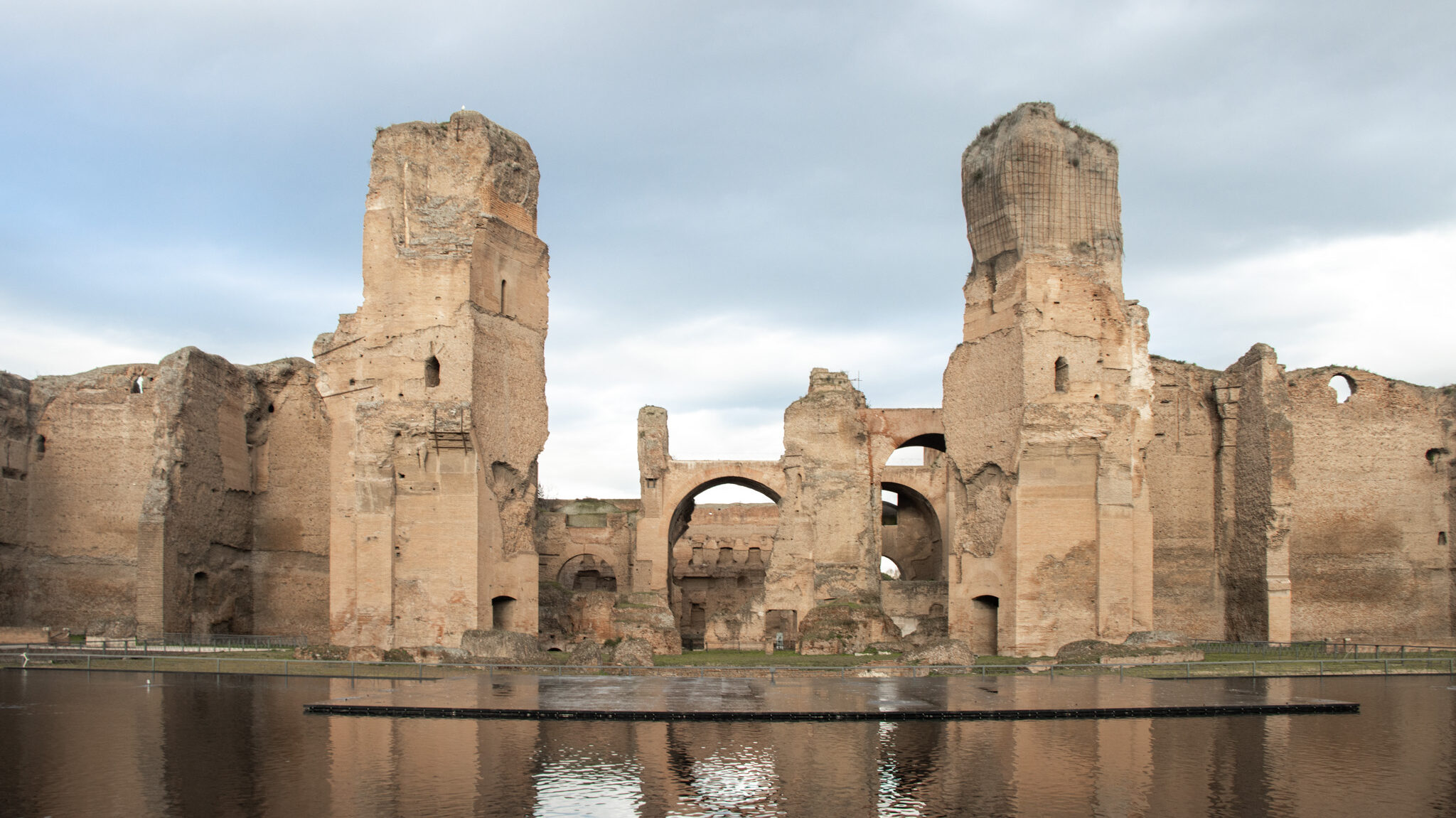
The Baths of Caracalla rank highly among the most impressive ancient sites in Rome, though they’re often missed by visitors. The baths are located a short bus ride from the Colosseum and were built in the 3rd century AD during the reign of Emperor Caracalla. They were once the most luxurious and largest public baths in ancient Rome, and this enormous complex could hold up to 1600 people at one time.
These baths were a social hub in Rome. They included gymnasiums, hot and cold pools, and beautifully decorated rooms with marble sculptures and mosaics. As you walk through these ancient ruins in Rome, you’ll be amazed at the scale of these baths and wonder how they could have been built during this time period.
This archaeological site is also a unique example of Roman engineering, as many of the rooms had advanced heating systems in place. It’s worth the entry fee to stroll around what remains of the Baths of Caracalla.
Historic restaurants in Rome
Taverna Trilussa

It can be difficult to choose what historic restaurants in Rome to dine at, especially if you want to avoid tourist traps. If you’re spending time in Trastevere, and don’t mind a slightly pricier restaurant for at least one meal, Taverna Trilussa should be on your list. It was founded in 1871 and is known for its classic dishes such as all’Amatriciana and carbonara.
The menu is based around traditional Roman cuisine and the rustic charm of the restaurant is highlighted through its interior design. This is also where a lot of famous tennis players come to dine when they’re in Rome, so you’ll find a few signed tennis racquets and photos on the walls. This wasn’t the best pasta in Rome that we came across, but you pay for the experience and it turned out to be a nice evening.
Regoli Pasticceria

If you want to try traditional Italian pastries, there’s only one place to go and that’s Regoli Pasticceria. This pastry shop in Rome is known for its maritozzi (sweet buns with whipped cream) and it was established in 1916. There are plenty of other delicious sweet treats to try here, and it has a reputation for its quality among locals.
This is a very traditional pastry shop, with vintage display cases and a narrow interior. You may feel overwhelmed when you enter but there’s nothing to worry about – the locals are very nice!
Biscottificio Innocenti
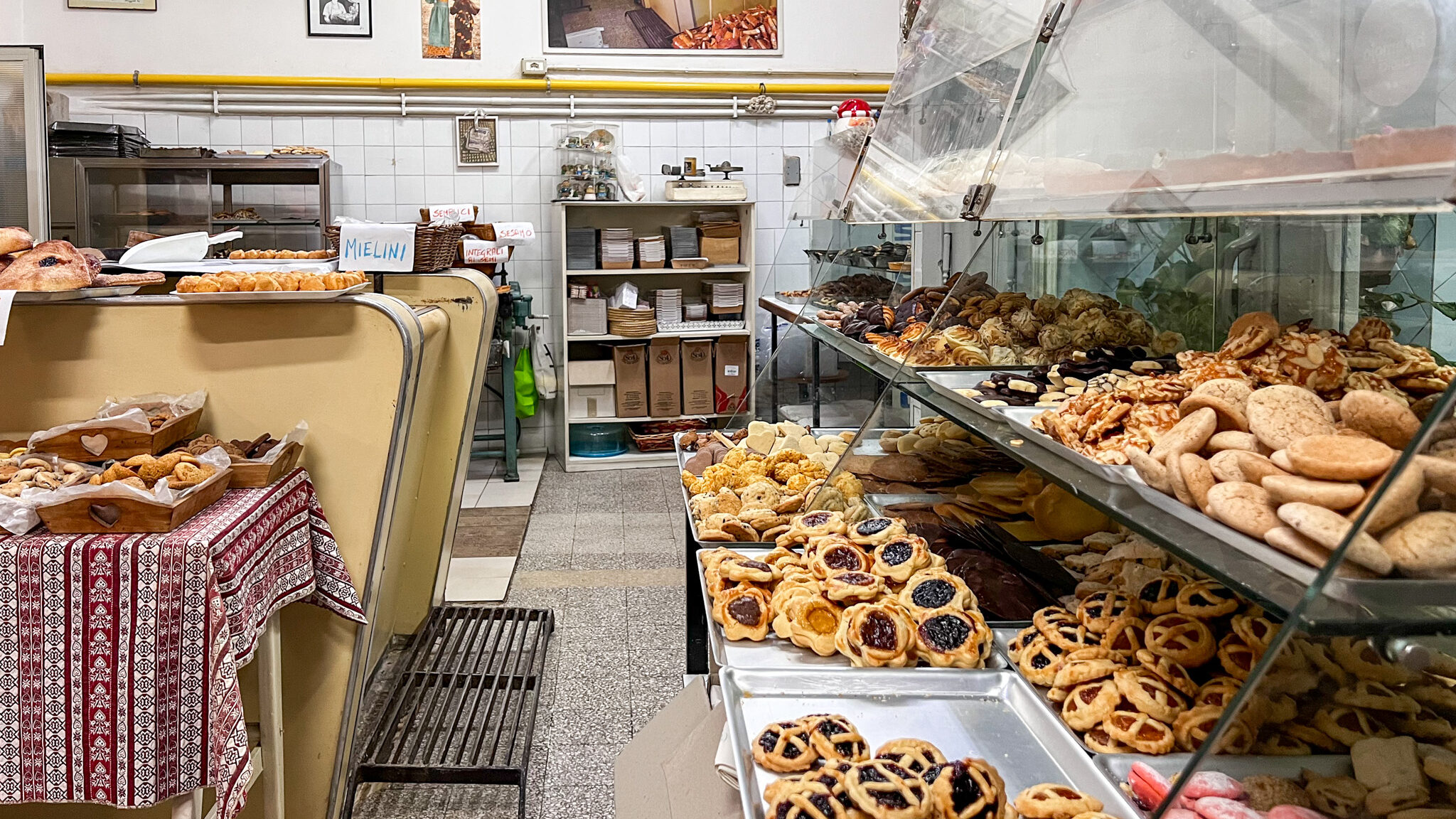
Located in the heart of Trastevere is Biscottificio Innocenti. We came across this historic family-run bakery during a Twilight Trastevere Food Tour, and wouldn’t have known about it otherwise. This traditional bakery dates back to 1920 and still uses the same oven to bake its famous cookies and traditional biscuits. As soon as you step into Biscottificio Innocenti you’ll feel like you’ve taken a step back in time, and with over a century worth of baking knowledge, you can’t go wrong ordering any biscuits from here.
Osteria da Fortunata
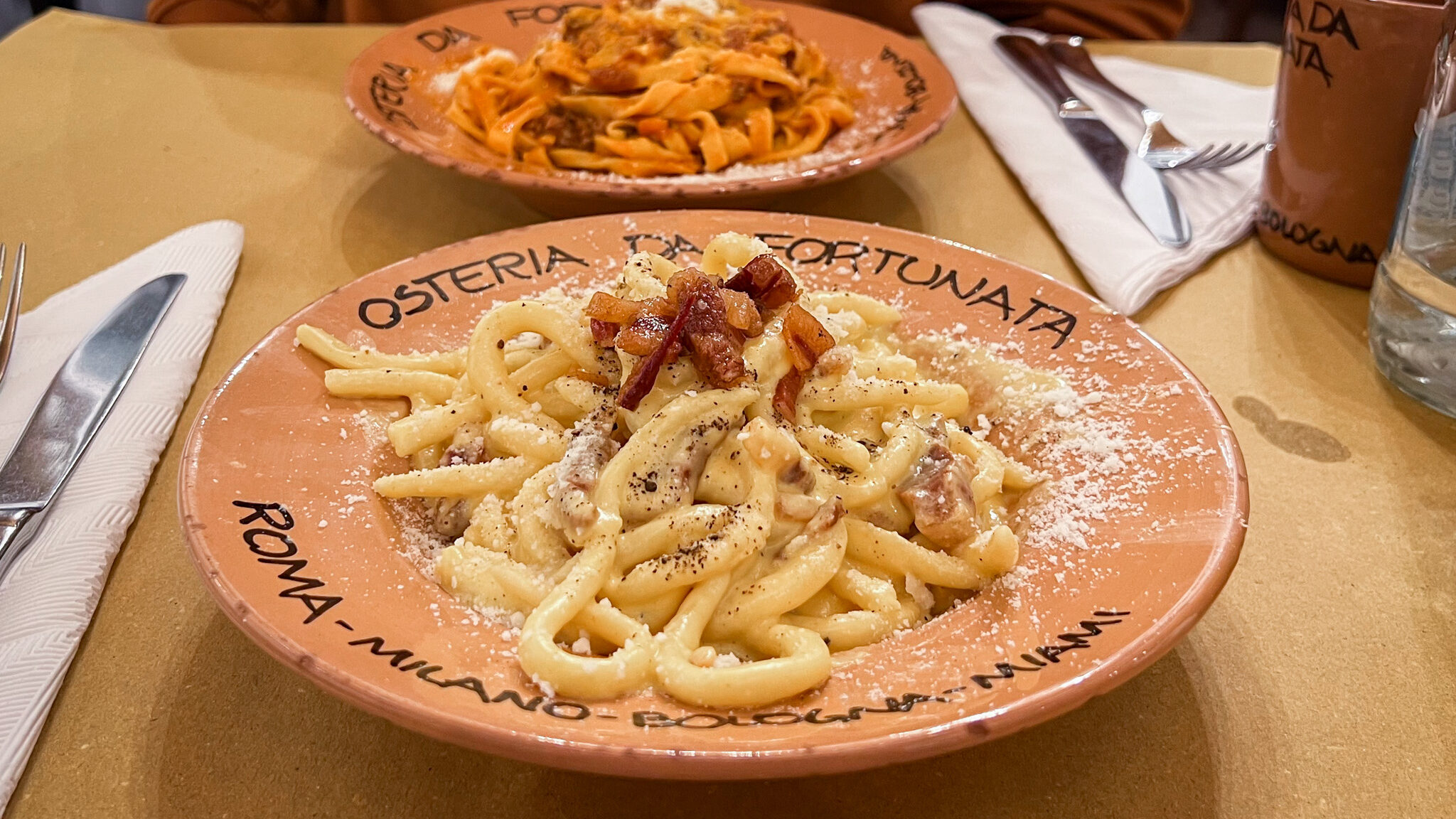
Founded in 1921, Osteria da Fortunata is among the most popular historic restaurants in Rome. It’s very well known for its hand-rolled pasta which you can see being prepared in the window as you walk by. They serve a fantastic selection of pasta dishes here, including carbonara and cacio e pepe. The rustic interior and its cozy atmosphere is what draws both tourists and locals to its doors.
They have a few locations around Rome, but their oldest one is their Rinascimento restaurant. It’s recommended that you phone ahead to secure a table, especially in the summer months.
Sant’ Eustachio il Caffe

After visiting numerous ancient sites in Rome, you’ll probably need a quick shot of espresso to keep you going. Sant’ Eustachio il Caffe is a historic coffee shop in Rome, dating back to 1938. It’s very well known for its traditional Italian coffee and old-world charm. The vintage wooden counters are a lovely spot to order a quick espresso from as you take in the surroundings of over a 100 years worth of history. Plus, you can get some great souvenirs from Rome here too.
Checco Er Carettiere
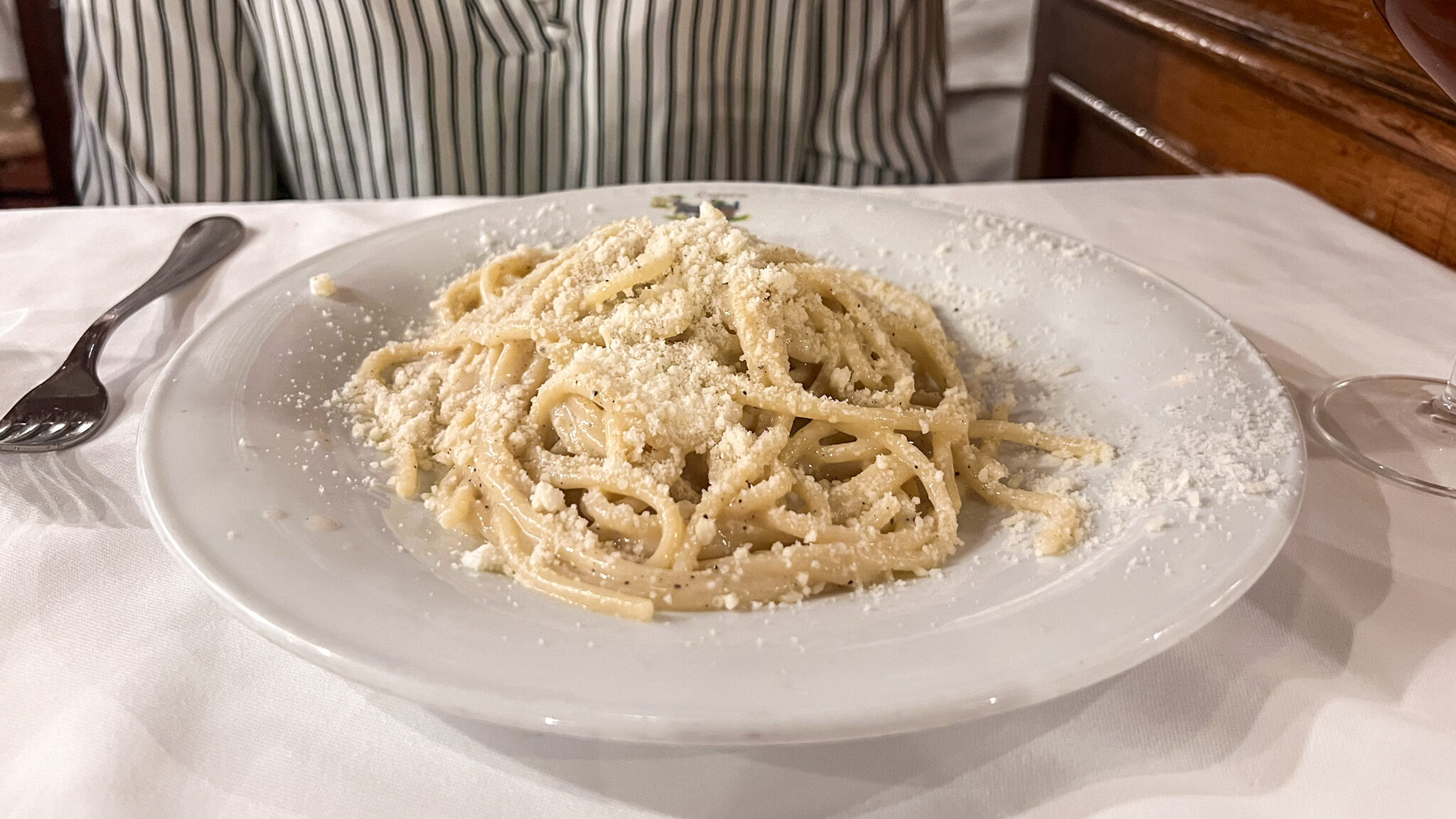
One of the most beautiful historic restaurants in Rome is Checco Er Carettiere. It first opened its doors in 1890 and is known for its classic Roman dishes. This traditional Roman trattoria is located in Trastevere, with a rustic interior that still oozes vintage charm. It has a long standing commitment to using traditional recipes in its dishes, so you can expect things such as oxtail stew and various fresh pastas available on the menu. They also have a nice wine list and cocktail menu available.
Armando al Pantheon
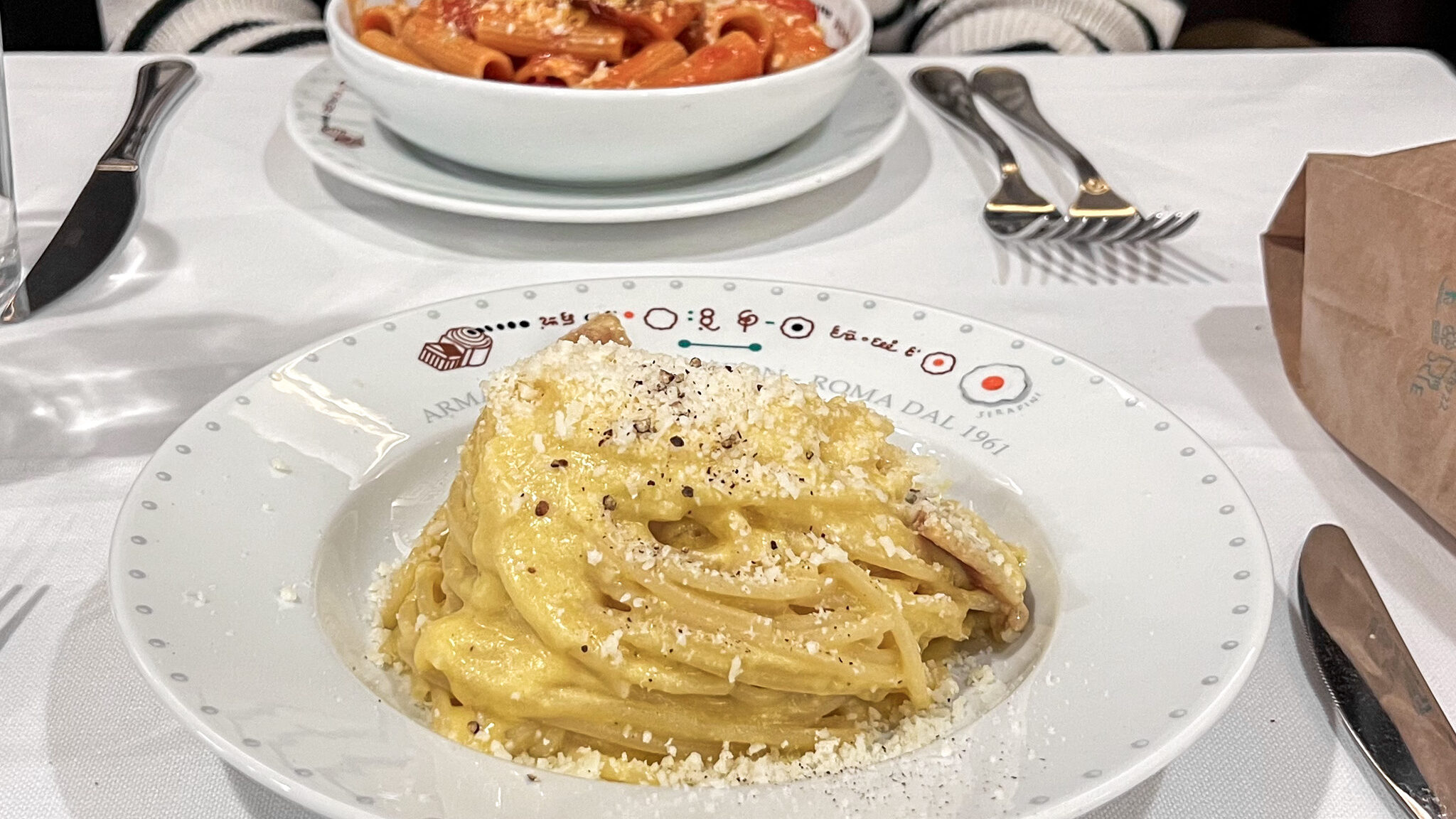
Armando al Pantheon is one of the most difficult restaurants in Rome to get a reservation for. It sits next to the Pantheon and it was founded in 1961. At any time of the year, the online booking system is almost completely full, so you really need to think ahead if you want to dine here. Its menu is based around authentic flavours and traditional dishes, with pasta dishes such as gricia and carbonara highly recommended.
I was a little underwhelmed with this historic restaurant in Rome considering all of the hype though. The carbonara looks amazing but it lacks flavour, and the prices are slightly higher than other nearby restaurants. It’s somewhere you should try at least once though, especially if you’re visiting nearby ancient sites in Rome.
Ristorante Tre Scalini
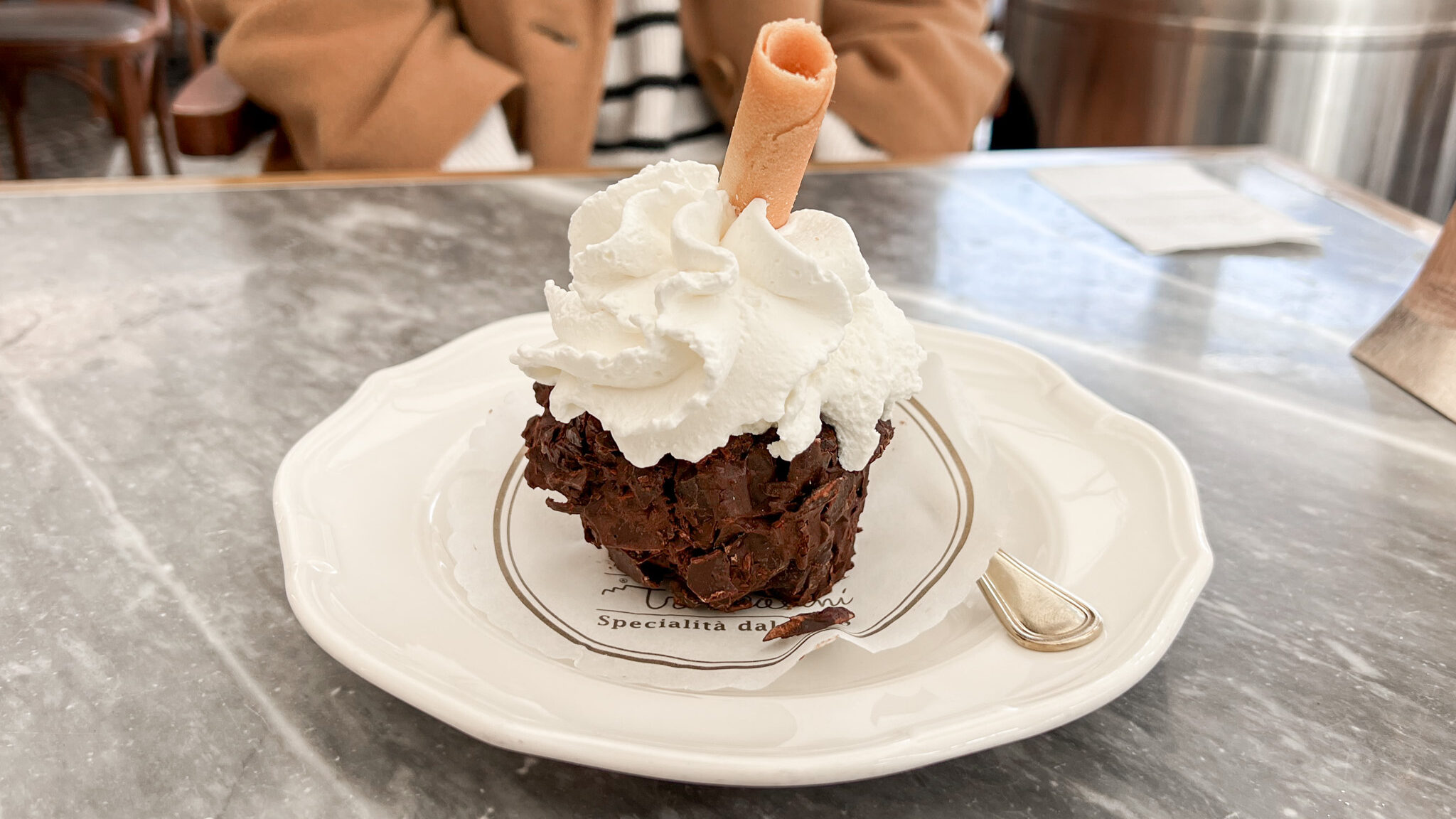
Nestled along the perimeter of Piazza Navona is Ristorante Tre Scalini. This historic restaurant in Rome was founded in 1931, and is especially known for its decadent tartufo dessert that’s become its signature treat. It’s made using 13 different types of chocolate and is then topped with whipped cream. And it doesn’t come cheap either. I’d recommend ordering one tartufo to share, but eating a main course elsewhere as this restaurant is seen as a tourist trap.
You’ll also come across numerous tiramisu spots in Rome around Piazza Navona that are worth trying.
Where to stay in Rome
Roma Luxus Hotel
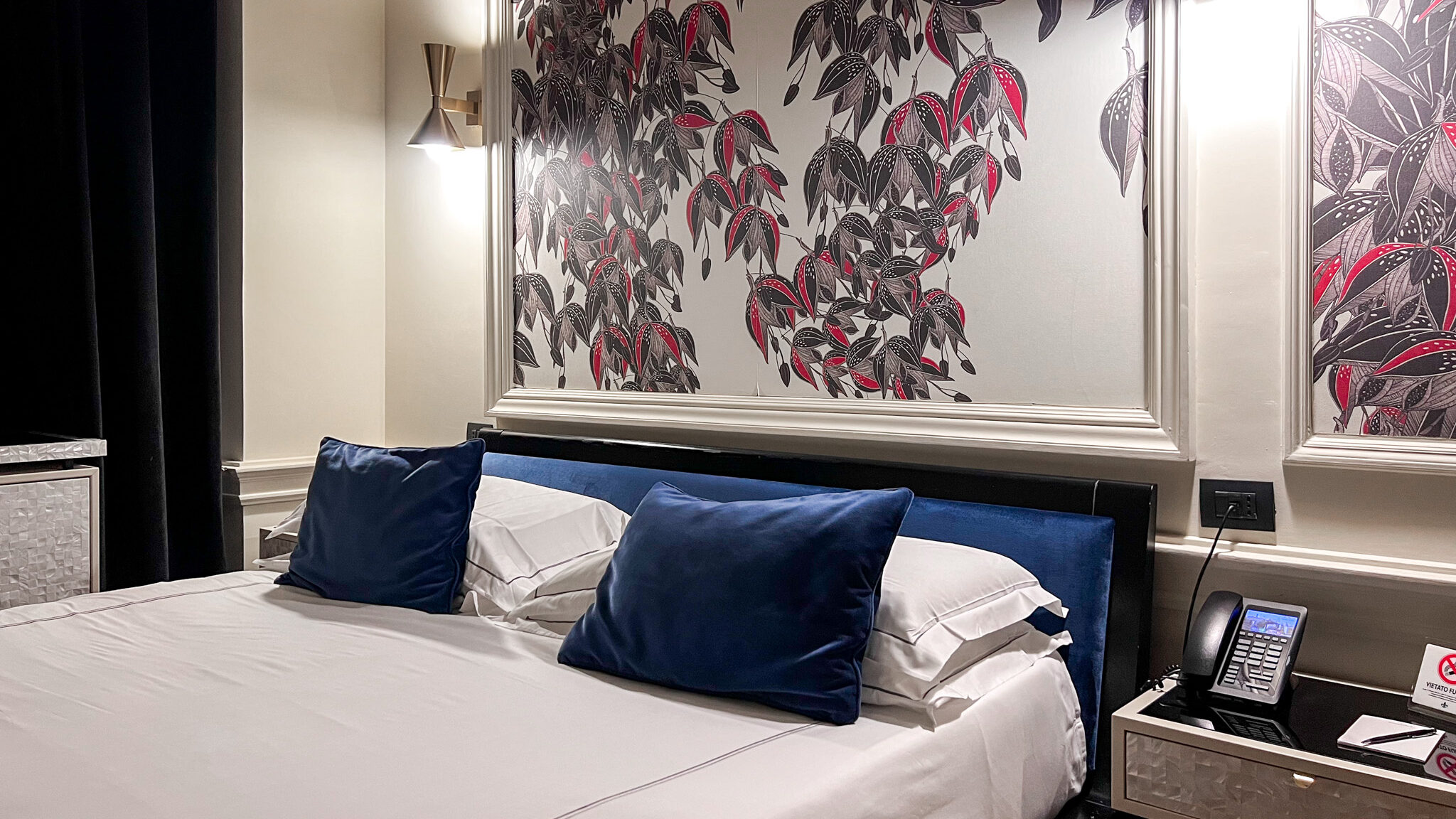
If you’re planning to stay in the heart of Rome and you’re looking for a hotel that offers modern luxury, Roma Luxus Hotel should be taken under serious consideration. This 5-star hotel in Rome is located very close to iconic landmarks such as the Colosseum, Piazza Venezia, and the Roman Forum. It sits inside a beautifully restored historic building and offers a unique atmosphere that blends contemporary design with classic architecture.
There are several room and suite options available at Roma Luxus Hotel. Each one offers sleek furnishings, a comfortable bed and luxury bedding, and modern amenities such as a TV, coffee machine, and a telephone. Our room also had a mini-fridge stocked with drinks and snacks. The walk-in shower in our room was separated from the toilet, and its modern design blended in beautifully with the rest of the room.

The best way to start your day before visiting all of the incredible ancient sites in Rome is by having breakfast at Roma Luxus Hotel. Breakfast is served in one of the hotel’s stylish restaurants, and offers a combination of a buffet and a hot food menu. The buffet has everything from breads, pastries, seasonal fruits, and juices (even tiramisu one morning). Guests can also choose a hot dish from the menu at the table.
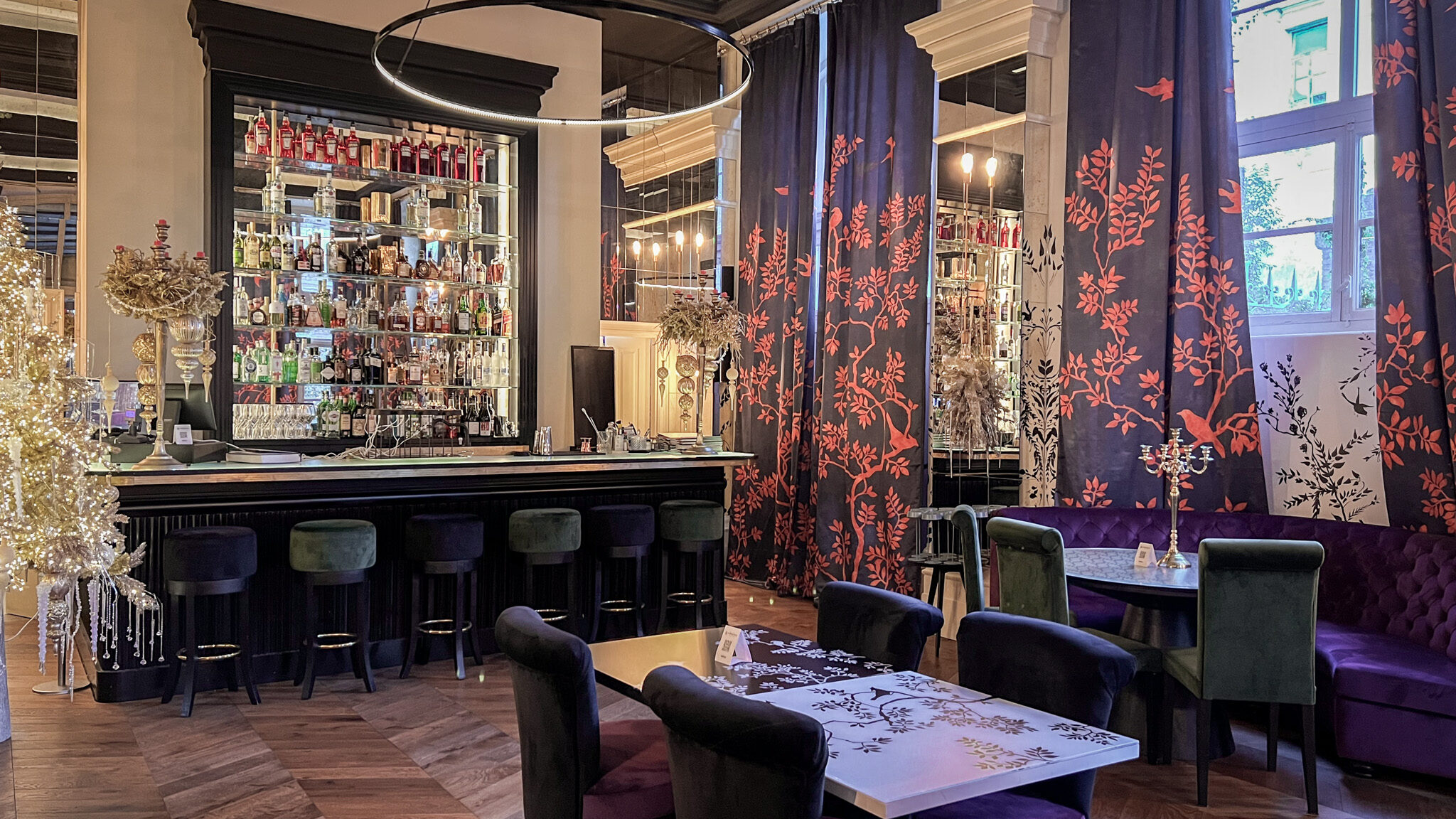
Roma Luxus Hotel offers guests the choice of two restaurants, with a very cozy and modern bar space on the first floor as well. Both restaurants use locally sourced ingredients where possible to create a memorable dining experience. There’s also outdoor seating available throughout the year. The bar and restaurants are perfect spaces to come back to after a long day of exploring Rome.
It can be hard to find a good quality hotel in the centre of Rome that’s both modern and affordable. Although Roma Luxus Hotel is a 5-star hotel in Rome, its prices are very reasonable and the room selection can’t be beat. You won’t find a better hotel surrounded by the key ancient sites in Rome than Roma Luxus Hotel.
>> See what rooms are available now at Roma Luxus Hotel <<
How many days to stay in Rome
Planning a trip to Rome is a daunting task, with so many incredible ancient sites in Rome to visit and restaurants to try out. There’s no right amount of time to spend in Rome though. Even if you can only spare 3 days in Rome, you can see many of the main attractions during this time. We spent 10 days in Rome and managed to dive deeper into the lesser known attractions in Rome, which was a great way to learn more about the city. However long you decide to spend in Rome though is sure to be an unforgettable experience.
If you have any questions about what ancient sites in Rome to visit, where to stay in Rome, or where to eat in Rome, please feel free to reach out via email or through the contact form on my website. You can also get in touch via Instagram or TikTok where I’m always sharing new travel tips and ideas about where to plan your next trip to.
This post may contain affiliate links, which means I may earn a commission from the discount codes used or when a link/ad is clicked. All purchases made will come at no extra cost to you, and I only include products and services that I would personally recommend.
Pin this blog post for later!
